-
Lieutenant Colonel
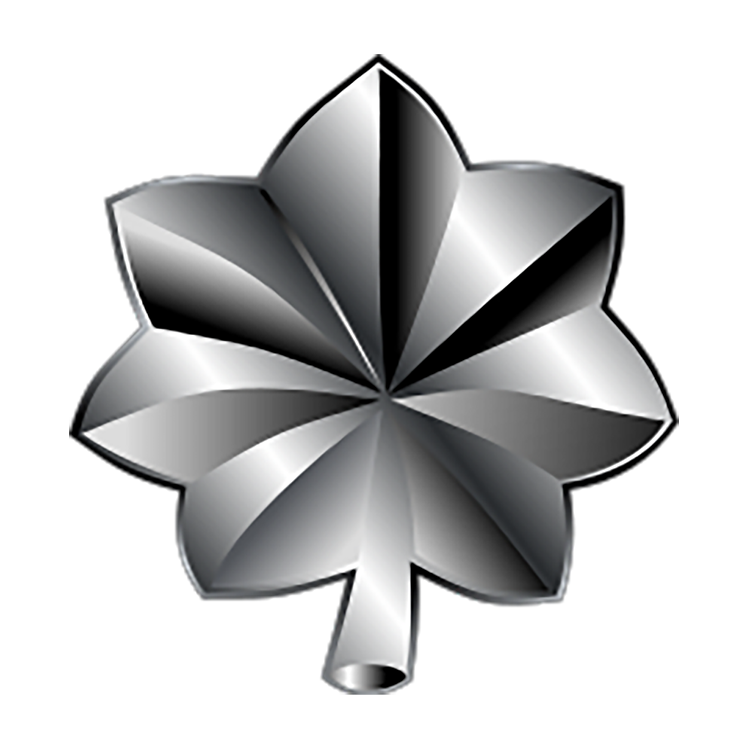 O-5 | LTC
O-5 | LTCDescription
Lieutenant Colonel is typically the Battalion Commander of a battalion. LTCs are responsible for enforcing high-level standards among the commissioned officers, resolving high level internal disputes, and leading top-level operations. Lieutenant Colonel is the highest rank in the 502nd Military Intelligence Group.
-
Major
 O-4 | MAJ
O-4 | MAJDescription
Majors are mid-level commanders and policy-makers. Majors often oversee multiple operational elements and works with S-Shops to implement long-term planning, unit growth, and training. Majors focus more on development rather than field command.
-
Captain
 O-3 | CPT
O-3 | CPTDescription
Captains often serve as a Commanding Officer in a company and senior officer for most day-to-day operations. Captains will often serve in staff office roles as a leader as well. They are responsible for mission planning, leadership assignments, strategic oversight. Captains set the tone for discipline and professionalism.
-
First Lieutenant
 O-2 | 1LT
O-2 | 1LTDescription
First Lieutenant leads a platoon or a section of an office with confidence. 1LTs work closely with senior non-commissioned officers to maintain cohesion and mission success. Trusted with operational-level planning and early administrative responsibilities.
-
Second Lieutenant
 O-1 | 2LT
O-1 | 2LTDescription
Second Lieutenant is an entry-level officer, typically serves as a Platoon Leader with the assistance of a senior non-commissioned officer.
-
Chief Warrant Officer 3
 W-3 | CW3
W-3 | CW3Description
CW3s are the pinnacle of technical mastery in the battalion. They serve as senior advisors to both officers and enlisted, overseeing specialist functions like recon strategy, intel analysis, or forward deployment logistics. CW3s are often consulted in mission planning stages and may take command of niche teams when necessary. They combine battlefield experience with deep subject knowledge, ensuring operations run at peak efficiency behind the front lines.
-
Chief Warrant Officer 2
 W-2 | CW2
W-2 | CW2Description
CW2s are experienced technical leaders who have shown consistent dedication and precision in their specialty. They may advise S-Shops, help train junior members in their field, or coordinate complex tasks like vehicle logistics, forward base planning, or surveillance operations. CW2s may lead specialist detachments or support field commanders during large-scale operations.
-
Warrant Officer 1
 W-1 | WO1
W-1 | WO1Description
Warrant Officer 1 is a technical specialist who has proven deep expertise in a specific area — such as logistics, engineering, reconnaissance, or communications. WO1s operate independently or alongside leadership to ensure that key systems and strategies are functioning smoothly. They are not expected to command troops directly but are trusted advisors and problem-solvers in their field.
-
Sergeant Major
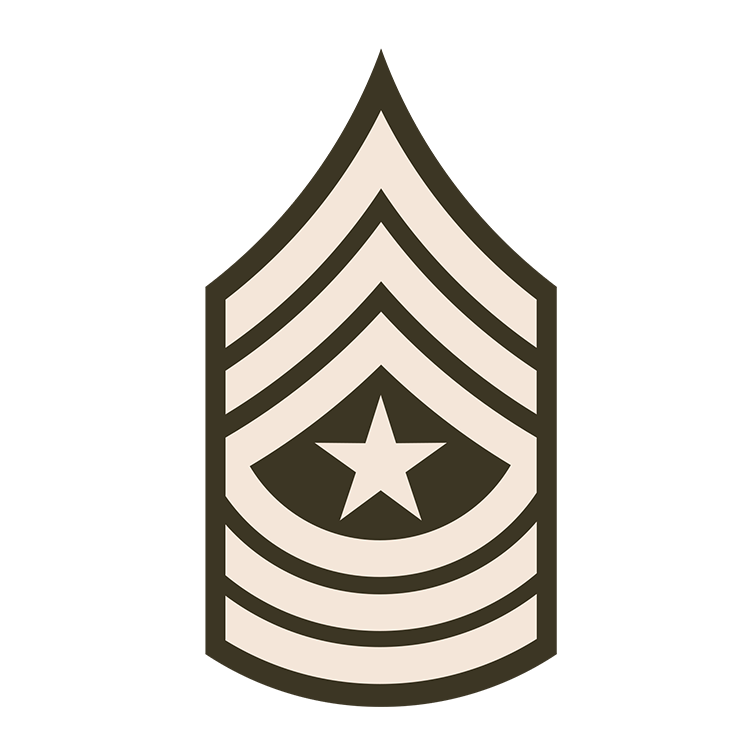 E-9 | SGM
E-9 | SGMDescription
Sergeant Major is a battalion level rank, serving as the right hand to the Battalion Commander. Sergeant Majors are responsible for maintaining discipline, enforcing standards, and guiding the NCOs across the battalion. They offer mentorship, resolve internal conflicts, and represent the interests of enlisted members at the highest level. Their presence sets the tone for both unit professionalism and enjoyment.
-
First Sergeant
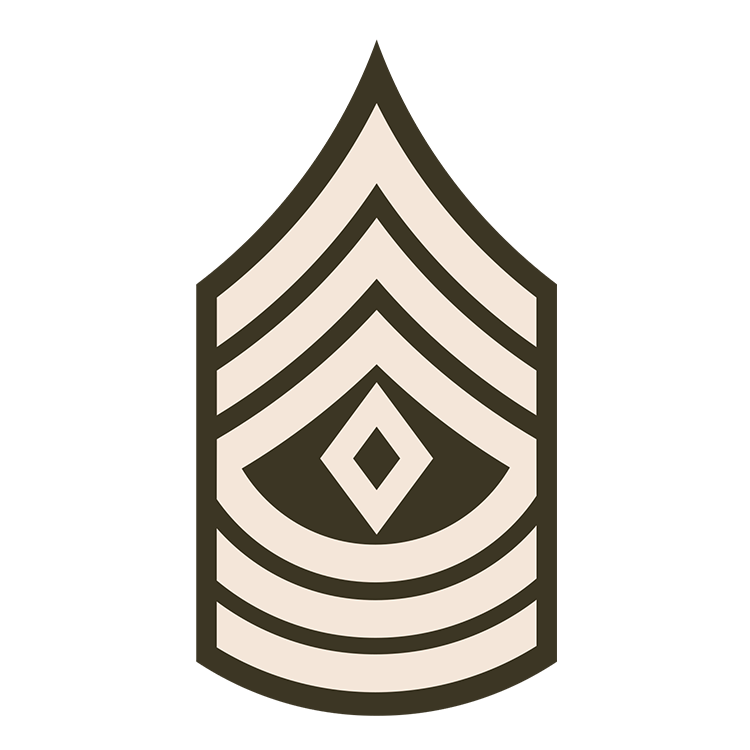 E-8 | 1SG
E-8 | 1SGDescription
First Sergeant is the top enlisted leader in a company-sized unit. Often manages personnel, morale, and discipline in the company. First Sergeants act as a direct link between enlisted members and officers. Ensures the unit functions like a well-oiled machine.
-
Master Sergeant
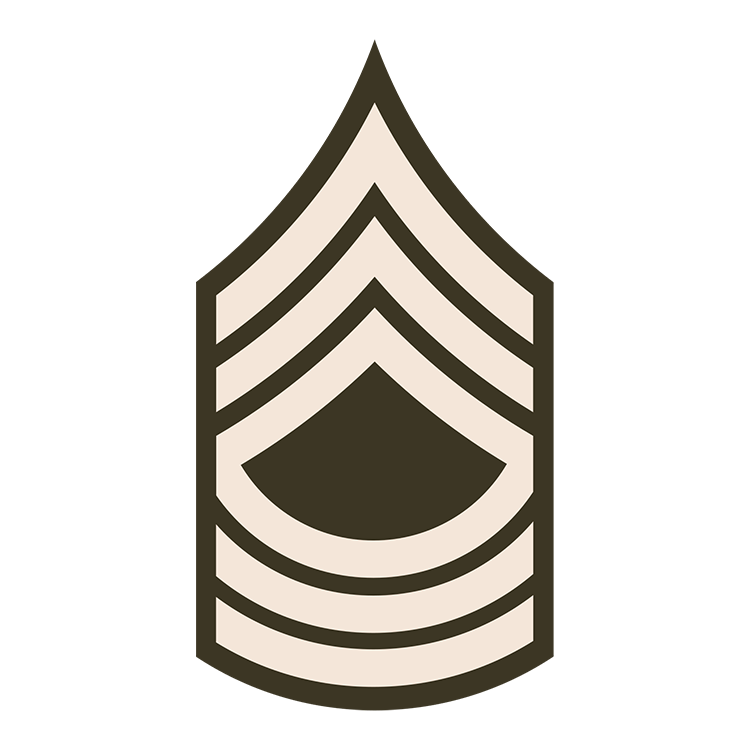 E-8 | MSG
E-8 | MSGDescription
Master Sergeants are operational advisors to officers and key voices in internal decisions. Master Sergeants focus on maintaining standards, organizing drills, and supervising multiple squads. Rarely lead in the field, but vital behind the scenes.
-
Sergeant First Class
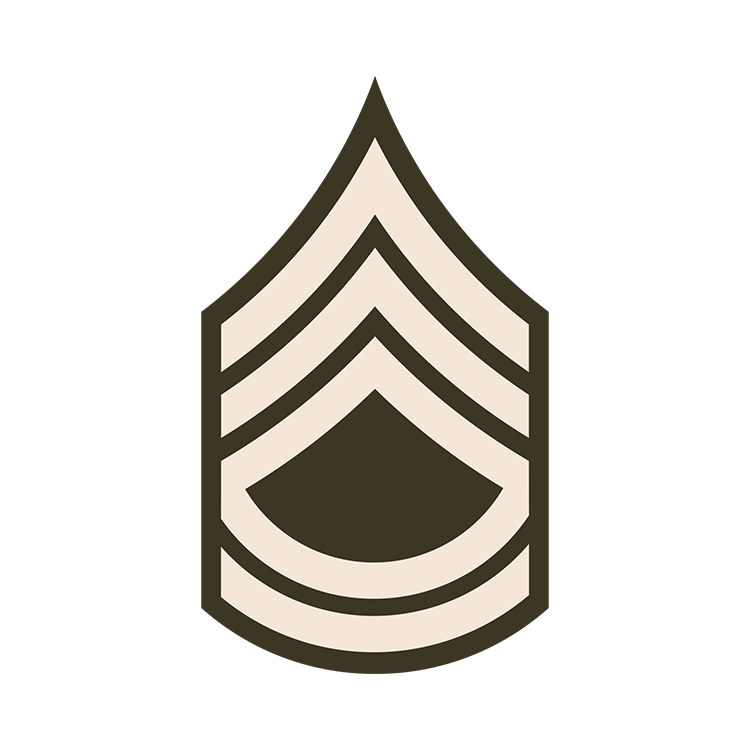 E-7 | SFC
E-7 | SFCDescription
Sergeant First Classes are veteran non-commissioned officers who manage company-wide overall cohesion and readiness. Often the senior NCO in an operation, they oversee training, logistic coordination, and mentoring NCOs underneath them. Sergeant First Class is a rank with a lot of trust.
-
Staff Sergeant
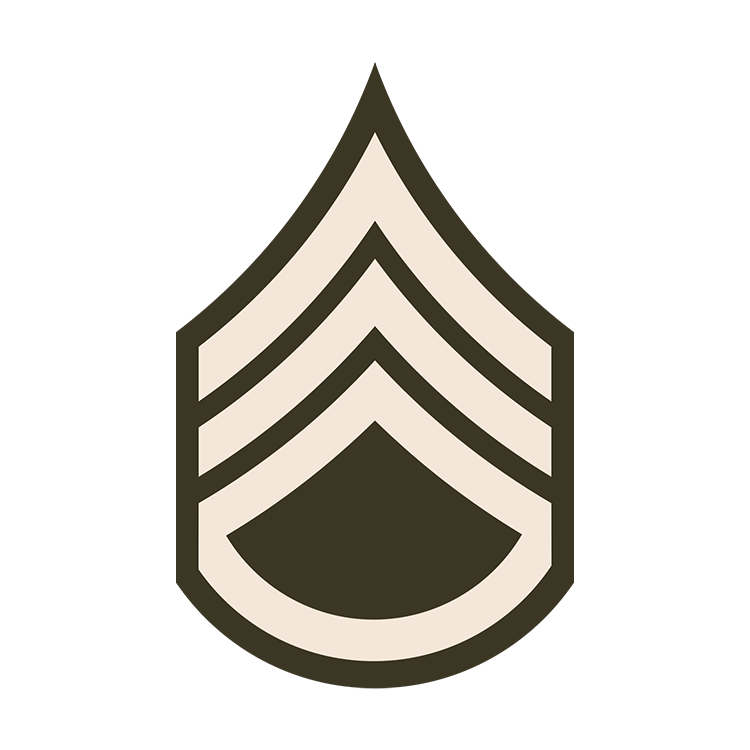 E-6 | SSG
E-6 | SSGDescription
Staff Sergeants lead larger squads or platoon-sized elements when necessary. Staff Sergeants assist in planning missions, enforce unit standards, and coordinate with senior non-commissioned officers and commissioned officers. Staff Sergeants always maintain strong communication and are dependable field leaders.
-
Sergeant
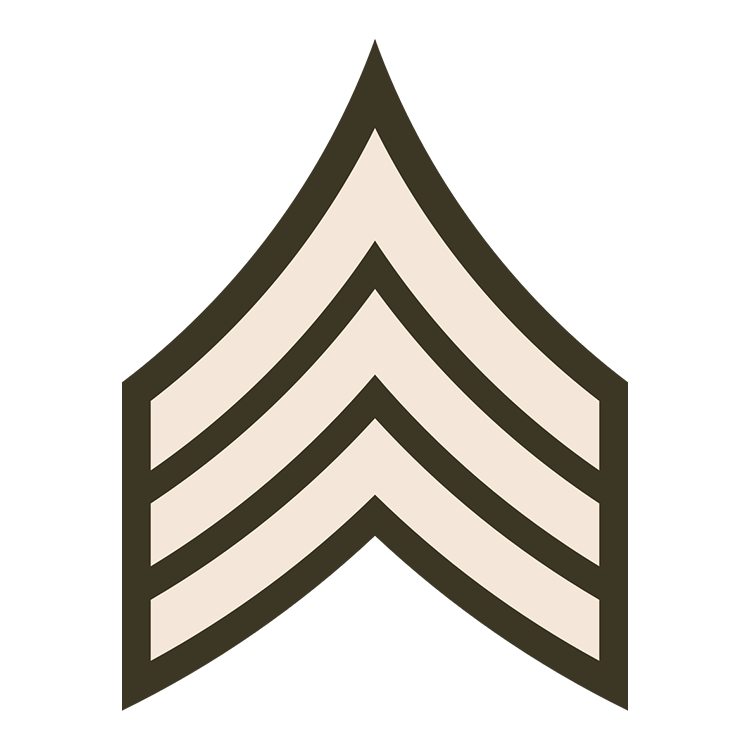 E-5 | SGT
E-5 | SGTDescription
Sergeants are responsible for leading squads in operations, drills, and public play. Sergeants are expected to train, discipline, and mentor junior members while executing the tactical plan of higher command. Sergeants are the key to frontline leadership.
-
Corporal
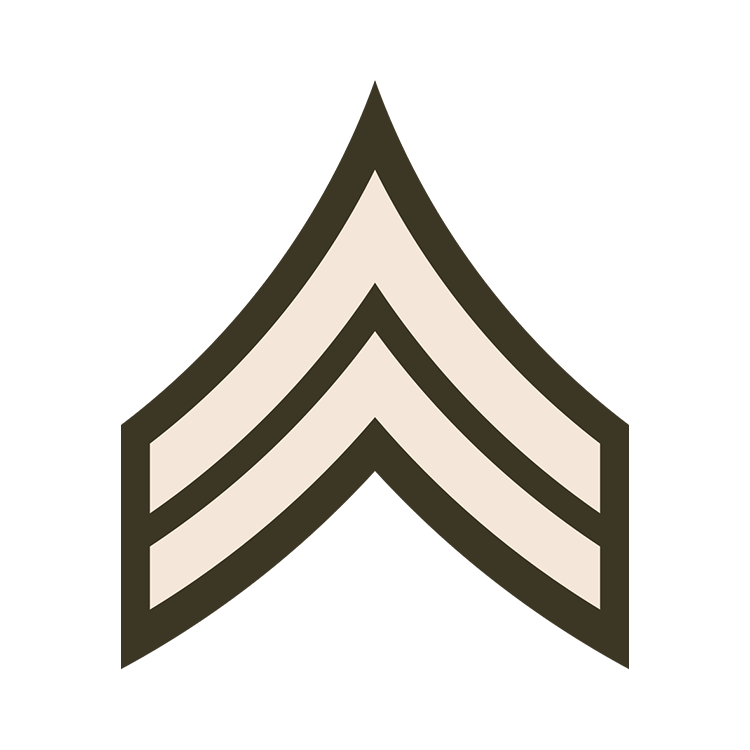 E-4 | CPL
E-4 | CPLDescription
Corporal is the first leadership rank. Corporals lead small fireteams or specialist elements during operations. They serve as a bridge between junior enlisted and senior NCOs, showing both tactical awareness and command potential.
-
Specialist
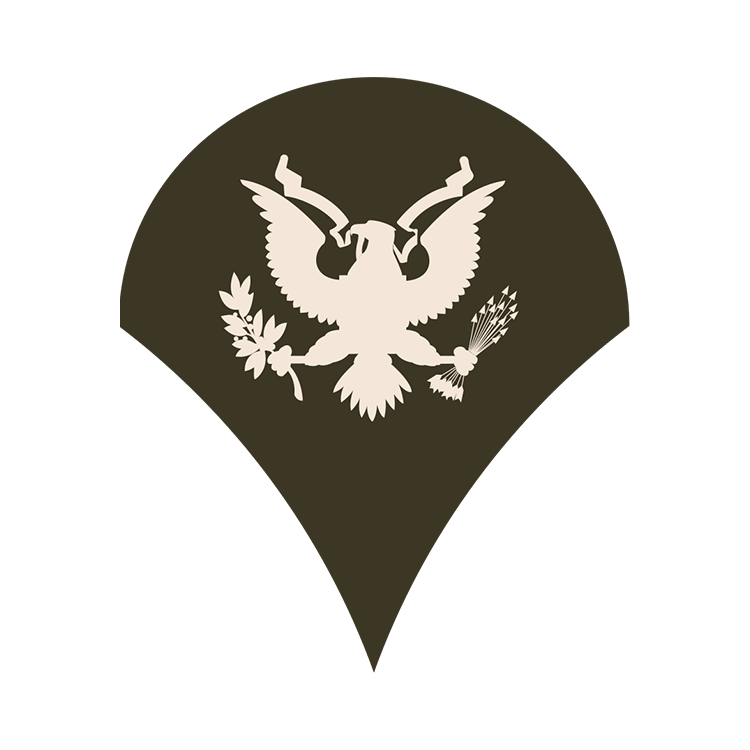 E-4 | SPC
E-4 | SPCDescription
Technically proficient and tactically competent. Specialists may take initiative in specific support roles (e.g., marksman, engineer, crewman), but do not yet lead teams. Recognized for consistent performance and mission reliability.
-
Private First Class
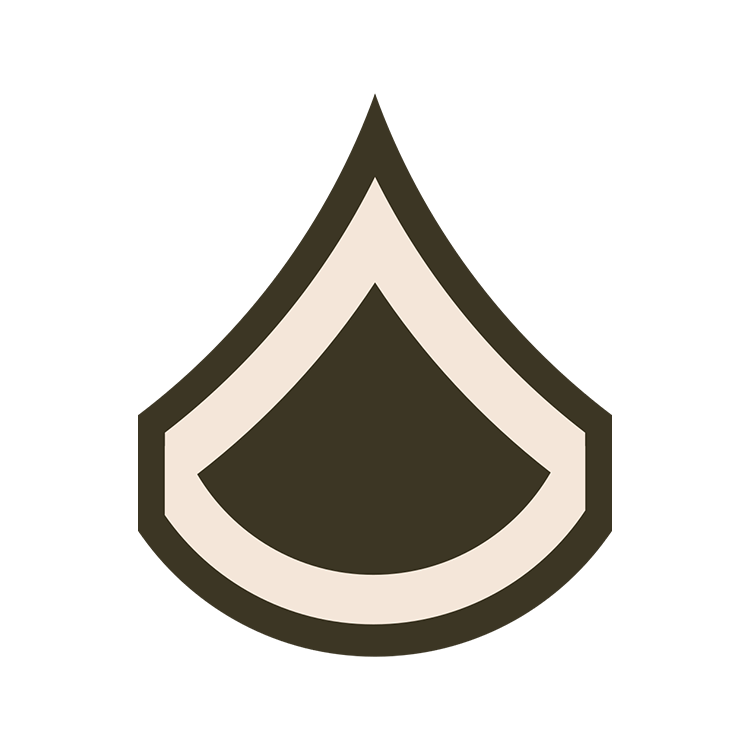 E-3 | PFC
E-3 | PFCDescription
The rank of Private First Class demonstrates a solid understanding of basic unit structure and field tactics. Reliable in following orders and functioning within a squad. Expected to maintain discipline and assist newer players when needed.
-
Private
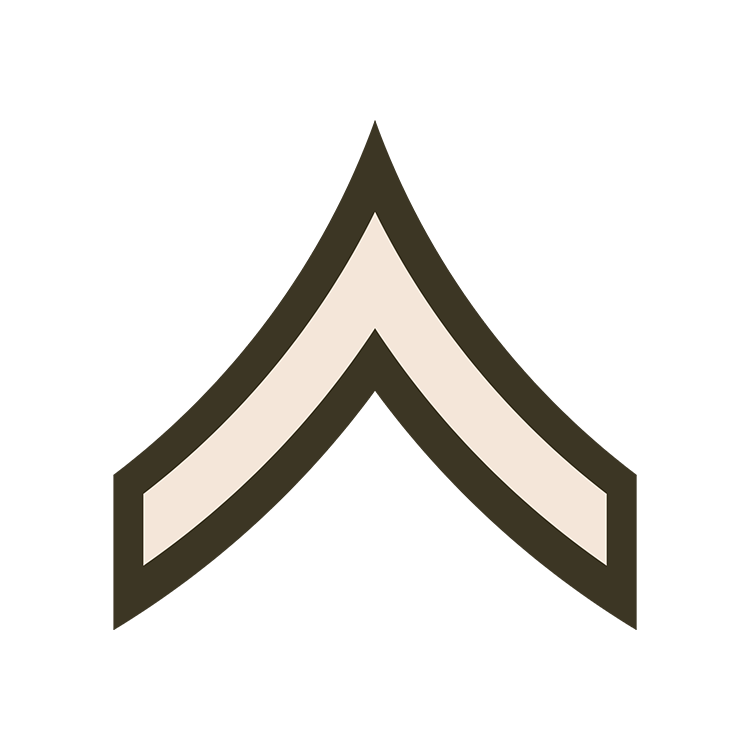 E-1 | PVT
E-1 | PVT
